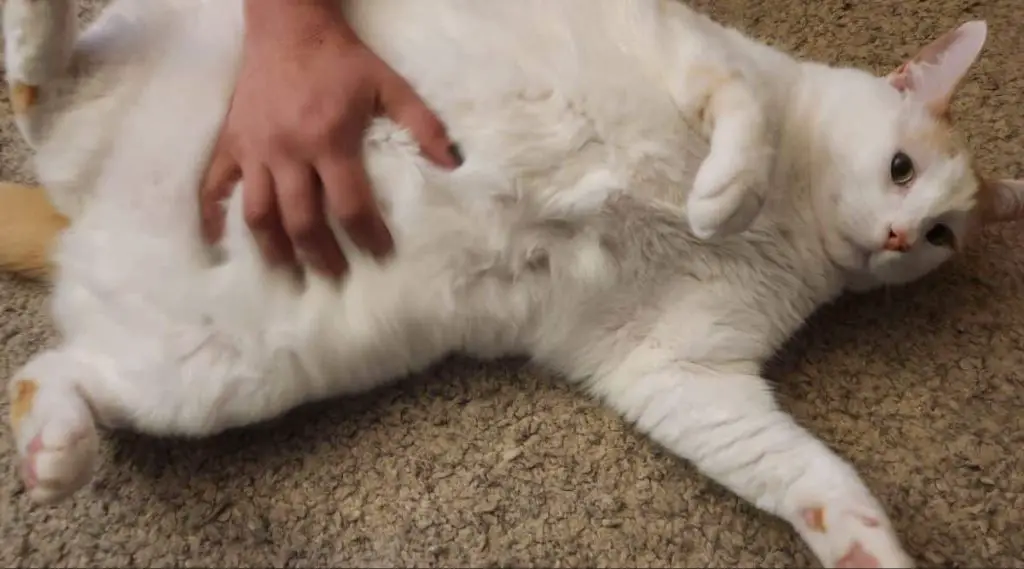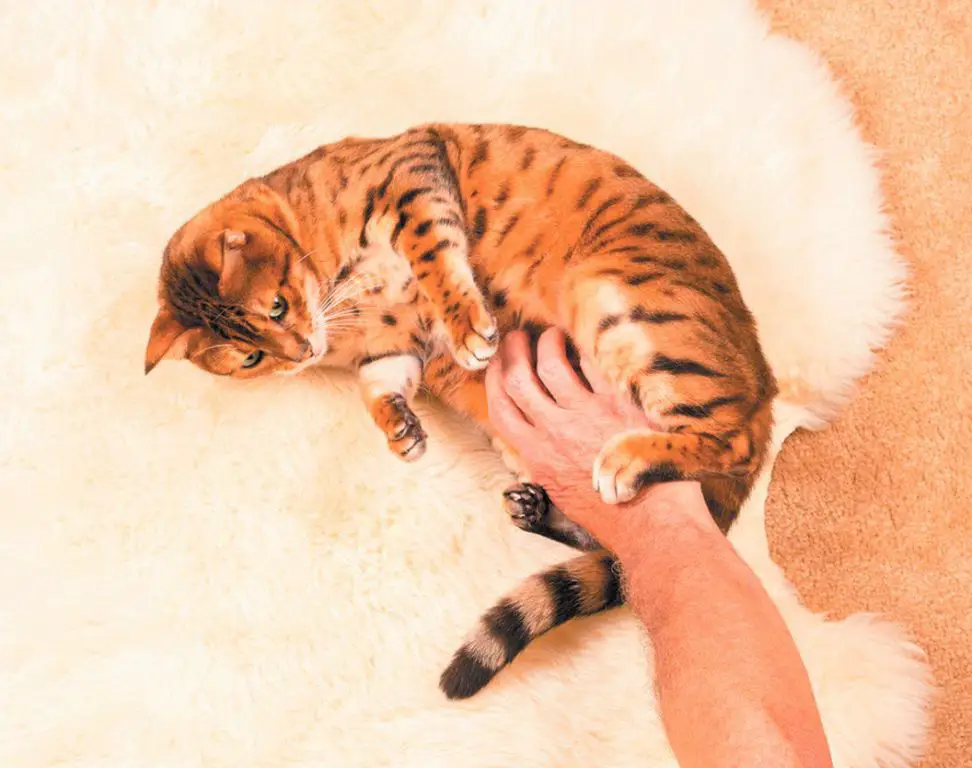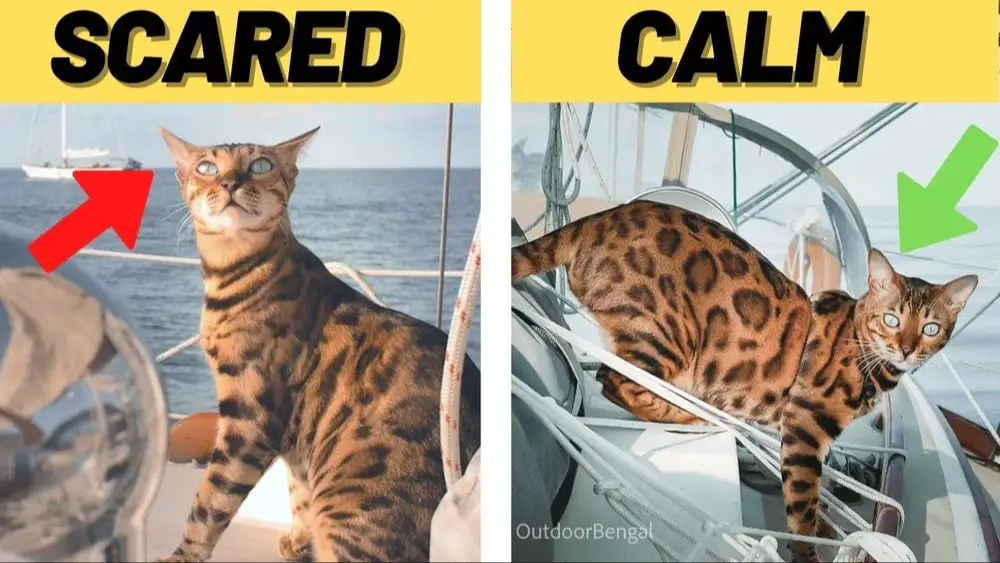Do Cats Enjoy Belly Rubs?
When a cat rolls over to expose their belly, it can seem like an invitation for a nice tummy rub. However, this apparently vulnerable position is often misunderstood by cat owners. While some cats do enjoy having their bellies rubbed, others will attack the hand that dares to touch their stomach. So why do cats show their bellies if they don’t always want them rubbed? The answer has to do with cat behavior and communication.
Cats expose their bellies for a variety of reasons. For some cats, it is a sign of trust and affection. But for others, it is a defensive posture to protect their vital organs. Cats also have scent glands on their abdomens and rolling over may be a way to spread their scent. The key is learning to read your individual cat’s body language rather than assuming they want a belly rub whenever their tummy is exposed.
Why Cats Show Their Bellies
Cats show their bellies as a sign of trust and comfort. When a cat rolls over to expose its belly, it means the cat feels safe enough in its environment to make itself vulnerable in that position (1). The belly is a sensitive area for cats, so showing it indicates the cat is relaxed and doesn’t feel threatened. A cat exposing its belly is communicating that it trusts the people or other animals around it not to take advantage of its prone position (2). Simply put, a cat happily rolling over for a belly rub is a cat that feels completely at ease in its surroundings.

Cats also show their bellies to get more comfortable. Stretching out on their backs allows their skin and muscles to elongate after curling up for a nap. The posture helps them cool down on a hot day as well. A belly-up cat is often just getting into a cozy position or regulating its body temperature (3).
Sources:
(1) https://www.torontohumanesociety.com/the-cat-tummy-trap-explained/
(2) https://www.meowingtons.com/blogs/lolcats/why-do-cats-show-their-bellies-then-get-mad-when-you-pet-them
(3) https://www.catster.com/guides/do-cats-like-belly-rubs/
Pros of Belly Rubs
Belly rubs can help strengthen the bond between cat and owner. As cats expose their vulnerable belly region, a belly rub signifies trust and affection. Receiving belly rubs releases oxytocin in cats, also known as the “love hormone”, which promotes bonding. According to this article, the rhythmic motion of belly rubs can regulate a cat’s breathing and heart rate, creating a calming effect. When a cat solicits belly rubs by rolling over or nudging your hand, it’s a sign they desire that special one-on-one affection and attention from you.

Cons of Belly Rubs
While belly rubs can strengthen the bond between a cat and its owner, they do come with some potential downsides that cat owners should be aware of before reaching out to rub that fuzzy tummy.
One of the main cons of belly rubs is that they can overstimulate some cats. A cat’s belly is a very sensitive area, and rubbing this area can overly excite their nerves and cross their tolerance threshold. As Catster notes, cats have innately “sensitive nerve endings in the abdomen”, so vigorous belly rubs may be too much stimulation.
This overstimulation can cause the cat to have a defensive reaction, such as biting or scratching, even if they previously seemed to enjoy the belly rubs. As Rover explains, a cat may be “exhibiting pleasure behaviors one moment and swiping the next”. Trying to exceed a cat’s belly rub tolerance can turn a bonding experience into an unpleasant one.

Additionally, some cats may see belly rubs as a threat if they don’t fully trust the human. The belly is one of the most vulnerable parts of a cat’s body, so rubbing this area can feel threatening rather than affectionate. As a result, belly rubs should be approached carefully until strong trust and comfort has been established.
Reading Your Cat’s Body Language
Before going in for a belly rub, it’s important to read your cat’s body language to determine if they want one or not. Here are some key things to look for:
Tail position: A cat’s tail can reveal a lot about their mood. If their tail is relaxed and upright, it often signals they are open to a belly rub. But if the tail starts swishing back and forth rapidly, that’s a sign your cat is feeling irritated or overstimulated.
Eyes: A cat who wants belly rubs will likely make soft eye contact with partially closed eyes. Wide open eyes or dilated pupils, on the other hand, signal fear or aggression. Direct prolonged staring often means “back off.”
Ears: Relaxed, upright ears mean your cat is feeling friendly. Ears flattened back against the head suggest an unhappy or angry cat who does not want their belly touched.
It’s key to look at the whole body and check if your cat is tense or relaxed before attempting belly rubs. Let them invite contact through subtle clues, rather than going straight for their belly unprompted. Pay attention and adjust your actions based on their response.

Giving Belly Rubs
Though most cats enjoy belly rubs, it’s important to approach them properly to avoid getting scratched. Here are some tips for giving your cat belly rubs safely and enjoyably:
Start slow – Begin by gently placing one hand on your cat’s belly while they are laying on their side or back. Avoid sudden movements. Let them sniff your hand first so they know it’s you.
Watch closely – Keep an eye on your cat’s body language. If their muscles tense, their ears go back, or their tail starts swishing, they are feeling irritated. Ease up or stop petting if you notice signs of agitation.
Keep it short – Belly rubs should be brief, even if your cat seems to be enjoying it. Stop after a few minutes so they don’t get overstimulated. You can always resume later when they ask for more.
Cats have sensitive bellies and may attack out of instinct, even if they love belly rubs. By starting slowly, paying close attention, and keeping sessions short, you can give belly rubs safely and make sure your cat continues to enjoy them. Go at their pace and let their body language guide you.
Individual Preferences
Whether or not a cat enjoys or tolerates belly rubs ultimately comes down to the cat’s unique personality and comfort level with the person doing the rubbing. According to a survey conducted by CatBandit.com, around 28% of cats consistently enjoy and ask for belly rubs, while 39% sometimes enjoy them and 33% rarely or never like them (CatBandit.com).
Some cats are simply more affectionate and enjoy human touch of all kinds, while others prefer to keep their bellies to themselves. Even among cats that do enjoy belly rubs, they may only want them at certain times or in certain contexts, like when relaxed or as a bonding experience with a trusted human companion. Cats also communicate their desires through body language – if they show their bellies voluntarily, they are more likely to appreciate a rub (Soldenhoff).
The key is to understand your individual cat’s unique personality quirks and signals around belly rubs. Never force them if your cat appears uncomfortable. With time and trust, some cats may learn to accept or even enjoy belly touches from their favorite humans.
Building Trust
Gaining a cat’s trust is key to being able to give enjoyable belly rubs. You’ll need to let the cat warm up to you and set the pace. Move slowly and speak softly when interacting with your cat. Sit at the cat’s level and let them approach you first. Offer treats as positive reinforcement when they engage in desired behaviors like letting you pet their belly. Give them affection and playtime during normal activities so they see you as a source of good things. Don’t force interactions or grab at the cat, as this can destroy trust. Building a bond through routine gentle handling helps accustom cats to human touch. Reward calm behavior and go at the cat’s pace rather than forcing belly rubs. With time and patience, the cat will learn to trust you and enjoy the belly rubs.
When to Avoid Belly Rubs
Some cats may not enjoy belly rubs if they become agitated or overstimulated. The belly is a sensitive area for cats, and too much rubbing can cause them to feel anxious or irritated. Signs your cat is getting aggravated include swishing tail, flattened ears, dilated pupils, skin rippling, and sudden scratching or biting. Overstimulation occurs when the nerves in the belly send too many signals to the brain. This can make cats feel uncomfortable and make them lash out. It’s best to avoid belly rubs if your cat displays any body language suggesting overstimulation like growling, hissing, or attacking your hand. Start with short belly rubs and watch for cues to stop. Let your cat walk away if they’ve had enough. Forcing belly rubs will break trust and cause your cat to avoid them in the future.
Sources:
https://www.rover.com/blog/do-cats-like-belly-rubs/
https://be.chewy.com/is-this-normal-why-does-my-cat-hate-belly-rubs/
Conclusion
In conclusion, cats can show their bellies and desire belly rubs as a sign of trust and affection, but they can also view it as threatening. It’s best to pay attention to your cat’s body language, go slowly when initiating belly rubs, and stop if they show signs of agitation. With time and patience, belly rubs can be an enjoyable way for you and your cat to bond. Just remember that every cat is unique, so adjust based on their preferences. The key is building trust through positive interactions.
As a final tip, try rubbing just above the tail or under the chin as safer areas if your cat dislikes direct belly contact. With the proper approach, belly rubs can strengthen your relationship, but always let your cat take the lead.

